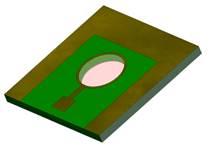

Figure 1: 3D (a) and cross section (b) of nanostructured piezoelectric microphone.
Adam D. Mathias – amathias@one.ducommun.com
Jon R. Fox – jfox@one.ducommun.com
Jean P. Cortes – jcortes@one.ducommun.com
Stephen B. Horowitz – shorowitz@one.ducommun.com
Ducommun Miltec – Emerging Technologies Group
678 Discovery Drive
Huntsville, AL 35806
Mohan Sanghadasa – mohan.sanghadasa@us.army.mil
Paul Ashley – paul.ashley@us.army.mil
US Army AMRDEC -
Redstone Arsenal, AL 35898
Popular version of paper 3aEA7.
Presented Wednesday Morning, Nov 02, 2011 @ 11:00 AM
162nd ASA Meeting, San Diego, Calif.
Microphones have been getting smaller. In recent years, advances in micromachining technology and microelectromechanical systems (MEMS), have led to smaller microphones that can perform as well as larger traditional microphones. Microphone miniaturization is a challenge though because generally, as a microphone design is shrunk down, performance will naturally get worse, as sensitivity tends to decrease while noise will typically increase. To get improved performance, designers have tried to overcome this challenge by using very thin films for the acoustic sensing diaphragms and carefully controlling the material properties.
Most miniature microphones rely on capacitive sensing methods whereby sound-induced motion causes a change in capacitance, although some microphones use optical, piezoresistive (sound-induced motion leads to a change in resistance) and piezoelectric techniques (sound-induced motion generates a voltage).
We have been focusing our efforts on developing technologies that allow for smaller piezoelectric microphones. The hope is to continue to shrink the microphone size while keeping the performance levels high. Our approach is based on the use of a novel composite material that embeds nanoscale piezoelectric materials (zinc oxide or ZnO nanorods) into a soft, flexible polymer [Figure 1]. By combining the two materials in this way, we can keep most of the high flexibility of the polymer while still maintaining the high piezoelectric coupling of the ZnO nanorods.
The composite material is then used as an acoustic sensing diaphragm. When acoustic waves reach the diaphragm, the pressure fluctuations induce a bending of the diaphragm. Because the nanorods are piezoelectric, when they are bent or stretched they generate a voltage, which we then measure as our output signal. Most recently, we have designed and built a series of microphones using this material with circular diaphragms that are between 100 micron and 800 micron in diameter.


The ZnO nanorods that we are employing are roughly 200 nm diameter, 1 micron long cylinders that are grown directly onto a gold-coated surface [Figure 2]. The wafer surface is coated with a zinc acetate solution and then heated in a furnace to 350 C to prepare the surface for rod growth. The nanorods self-assemble on the treated surface in a warm-water (60 C) zinc nitrate solution – a procedure that takes approximately 18 hours.

We are currently in the process of fabricating these piezoelectric microphones. We expect to be able to complete fabrication and begin testing of these devices over the next few months.
Approved for public release; distribution unlimited.